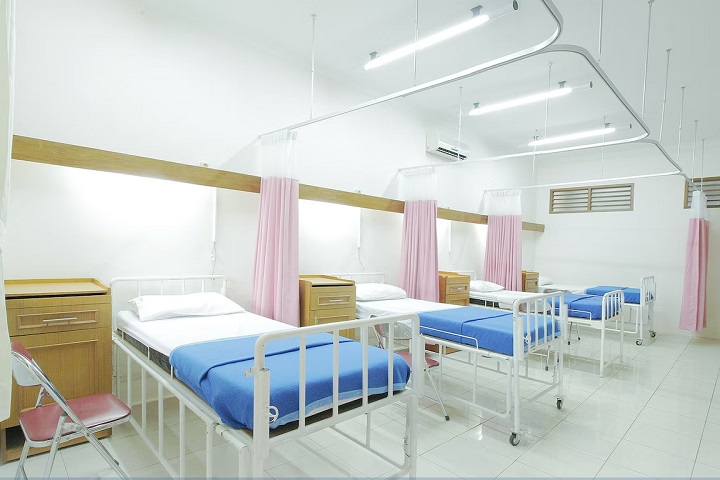In any given year, hospital staff deal with various logistical issues. From managing patient flow to dealing with medical waste, there is always something that needs to be sorted out. While some of these issues are more pressing than others, they all have the potential to cause disruptions in care if not properly managed. This article will look at some of the most common logistical issues hospitals faces and offer tips on solving them.
Managing Patient Flow
One of the most common logistical issues hospitals face is managing patient flow. This can be a challenge for even the best-run facilities, as it is often difficult to predict how many patients will need care at any given time. When patient numbers exceed capacity, it can lead to long wait times, overcrowding, and, ultimately, a deterioration in the quality of care.
There are a few key ways to manage patient flow more effectively:
- Streamlining the registration process: Making sure that the registration process is quick and easy will help to get patients through the door faster. This can be done by having staff pre-fill out forms where possible and providing clear instructions on what needs to be done.
- Using technology: Several software solutions can help manage patient flow. By tracking patients from admission to discharge, these systems can help to identify bottlenecks and areas for improvement.
- Communicating with patients: Keeping patients informed of their status and estimated wait times is crucial for managing patient flow. This can be done through signage, pagers, or other notification systems.
Dealing with Medical Waste
Another common issue faced by hospitals is the proper disposal of medical waste. This can include anything from used needles to expired medication. If not properly managed, medical waste can seriously threaten the health and safety of patients and staff.
Implementing a segregation policy is one effective way of dealing with medical waste. By segregating medical waste into different categories, it will be easier to dispose of it properly. This can help to avoid cross-contamination and ensure that all waste is properly disposed of.
Utilizing autoclaves is another way to deal with medical waste. Autoclaves are devices that use steam to sterilize medical waste. This is an effective way to kill any harmful bacteria or viruses that may be present.
A convenient and efficient way of solving the medical waste dilemma is by working with medical waste disposal companies. These companies have experience in medical waste management and specialize in properly disposing of medical waste. By working with one of these companies, hospitals can be sure that their waste will be appropriately handled. Additionally, partnering with a reliable forklift retailer can streamline the transportation of medical waste within hospital premises. This ensures that even the logistical aspects of waste management are efficient and safe.
Managing Supplies
Another logistical issue faced by hospitals is the management of supplies. This includes everything from surgical instruments to linen. Ensuring that adequate supplies are on hand can be challenging, as there is often a fine line between having too much and not enough.
There are a few key ways to manage hospital supplies more effectively:
- Developing a par level system: A par level is the minimum amount of a given item that should be on hand at all times. By developing a par-level system, hospitals can ensure they always have the supplies they need without having too much on hand.
- Utilizing inventory management software: Several software solutions can help manage hospital supplies. These systems can track inventory levels, expiration dates, and reordering information.
- Working with vendors: Hospital supply vendors can be valuable for keeping track of supplies. By developing relationships with vendors, hospitals can ensure they always have the supplies they need.
Handling Hazardous Materials
Another common issue faced by hospitals is the proper handling of hazardous materials. This can include everything from cleaning chemicals to medical waste. If not properly managed, hazardous materials can pose a serious threat to the health and safety of both patients and staff.
There are a few key ways to deal with hazardous materials more effectively:
- Establishing a hierarchy: When dealing with hazardous materials, it is essential to establish a control hierarchy. This means that the most dangerous materials should be controlled first, followed by less dangerous materials.
- Utilizing engineering controls: Engineering controls are devices or systems that help to reduce exposure to hazardous materials. This can include ventilation systems, enclosures, and barriers.
- Implementing administrative controls: Administrative controls are policies and procedures that help to reduce exposure to hazardous materials. This includes work schedules, training programs, and personal protective equipment.
Keeping Patients Safe
One of the most important logistical issues hospitals face is keeping patients safe. This includes everything from preventing falls to ensuring that medications are properly administered. There are several different ways to keep patients safe, but some of the most effective are listed below:
- Implementing fall prevention protocols: Falls are one of the leading causes of injury in hospitals. To help prevent falls, hospitals should implement protocols such as bed alarms and fall risk assessments.
- Medication management: Medication errors are a leading cause of hospital patient harm. To help prevent these errors, hospitals should implement systems such as barcoding and computerized physician order entry.
- Patient identification: Another way to keep patients safe is to ensure they are properly identified. This can include things like wristbands and ID badges.
Following the tips above, hospitals can effectively deal with the logistical issues they face. Doing so can create a safer environment for both patients and staff.



















